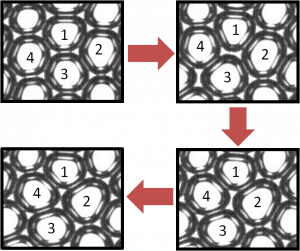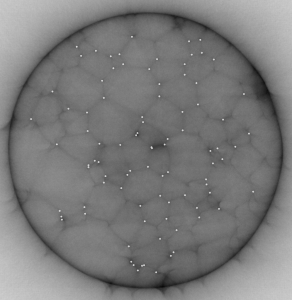Research in our lab focus on the emerging area of soft materials and complex fluids. Soft matter encompasses a broad set of materials that challenges traditional categorization as liquids and solids. Unlike ordinary matter, soft materials flow as a liquid above a critical applied stress, but respond elastically like a solid to low applied stress. The transition from fluid to solid behavior shows a dramatic slow down of the dynamics with very little change in the configuration of the particles, a phenomenon akin to the glass transition in molecular liquids. This complex dynamics, known as the jamming transition, raises several fundamental questions and practical issues. On the fundamental side, the microscopic origins of the jamming transition along with that of the colloidal glass transition stand as one of the hardest problems in condensed matter physics. At the heart of the problem lies the fact that viscosity increases without bound with no detectable changes of other ordinary system parameters. Therefore, it is very hard to predict exactly when the system will jam and what is specifically required to restore the flow. On the practical side, the jamming transition has a huge impact on everyday handling of soft materials. A large number of raw and manufactured materials such as foams, grains, emulsions, paints, pastes, suspensions, and gels are prone to intermittent flows, which leads to problems that range from a clogged salt shaker, to technical challenges in many industries such as chemical, mining, agriculture, pharmaceutical, to the anticipation and prevention of natural disasters such as avalanches and landslides. Any advance in understanding the complex flow behavior of soft matter will lead to significant progress both on the fundamental and technological fronts.
It is widely accepted that the complex behavior of soft materials emerge from the microscopic interactions between the disordered particles that make the soft material. We use a variety of techniques to probe soft materials such as high resolution optical tomography, high speed image, confocal microscopy and high precision rheo-optical measurements. Our main goal is to trace the macroscopic behavior of soft materials to their microscopic interactions and structural changes. Learn more about our research in the research page.


